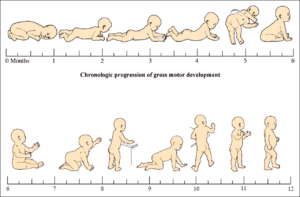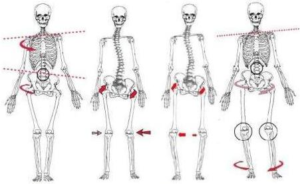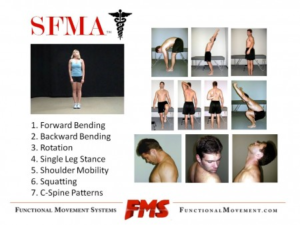Tips to maintaining physical health

Is your body healthy?
In this day and age, the way we perceive our own health is largely driven by our cultural influences. From fitness gurus and media to doctors, friends, family, and lastly google. We all have preconceptions about what it means to be fit and healthy. Most of the time, pain tends to be our marker for health and numbers for fitness. We’ve accepted any loss of flexibility, coordination or balance as simply age related changes after high school and as long as we’re doing our jobs without pain we assume we must be healthy. However, I would like to challenge the notion that just because we’re pain-free doesn’t mean we’re healthy. Deep down, I think we all know this just as we know the indicators of heart disease or diabetes occur long before any visible sign or problem.
How our neuromusculoskeletal system works:

Source: http://pedsinreview.aappublications.org/content/pedsinreview/31/7/267/F6.large.jpg
Unfortunately, our neuromusculoskeletal systems works quite differently. Our brain, muscles and joints adapt to support movement and postures we put ourselves in, especially the most frequent one. As we grow from being infants, our neuromusculoskeletal system develop patterns of movement and posture in order to allow us to learn to roll, crawl, knee, squat and finally standing. All this movement and feedback from movement allow us to learn what it feels like to move, use our body and explore new ranges of control while keeping the brain, muscles, and joints healthy from a variety of movement. Most people leave high school with a less than optimal “physical education” which means their bodies never really learned how to explore different patterns and ways of moving past our neurodevelopment stages. This is compounded by the fact that after starting a full time job, most of us don’t really move much besides standing, sitting and walking. Over time, these repetitive postures and movements stress the body to cause imbalances, compensations, and lack of motor control/awareness outside of this “norm” leading to our common neck, shoulder, back and hip pain. When we realize this, we attempt to correct our bodies by using sports. Yet sports are specific skills, and our sedentary bodies without the proper mobility predisposes itself to further injury rather than the health we were seeking. In short, our bodies were meant to experience a variety of movement in order to age gracefully.

source: http://alexslezak.com/wp-content/uploads/2013/08/Pyramid-of-Athletic-Development.jpg
When our neuromusculoskeletal system isn’t working the way it is supposed to…

source: http://www.improvewithchris.com/corrective%20exercise.jpg
There are always symptoms and signs of disease long before it occurs and I would like to say the same is with movement. Some symptoms that your neuromusculoskeletal system isn’t as healthy as you might think could include stiffness, “pinching” feelings, repetitive muscle strains or tension in a certain area. The clinical signs I often use are our neurodevelopment positions and movements, which everyone could once do and should be able to do even with aging. Basically, movement ABCs for basic health. These include being able to bring our hands behind our back, behind our head, toe touching, backwards bending, balancing on 1 leg for more than 10 seconds with your eyes closed, and squatting to parallel. Pain is the last symptom. Once pain occurs in a movement, that is when most people finally realize that something’s wrong.
What pain signifies…
When our bodies give us pain in certain movements, it’s its way of telling you that something needs to change. The movements and postures that you’ve put it in, are no longer working and it’s reached its threshold of compensating for it. Our bodies are resilient and so even the strongest and fittest athletes can take a huge amount of punishment before pain occurs.
The solution and the potential of our bodies
Our bodies have much more potential than we realize. Thankfully there is a solution to aging gracefully and moving optimally throughout the lifespan. With the right type of exercise, nutrition and sleep, research has shown that mobility and strength can be largely maintained even past the ages of 70-80. The key is to start young and to explore and practice all varieties of movement rather than purely aiming for numbers in arbitrary lifts, or distances you can run (after all, what good is it to run 10 km badly versus 1 km well?) Obviously, many factors that do impact our bodies are outside our control like genetics, accidents, and socioeconomics, and death. But there is more that you can do than you realize.
Recommendations

source: http://graycook.com/wp-content/uploads/Slide28-450×337.jpg
Sometimes what our bodies really need is just some guidance and a reset in order to allow it to move like it once did. Obviously the longer stiffness and dysfunction has been present the more time and the more resets it needs in order to perform optimally. This is what physiotherapy and physiotherapists can help. Physiotherapists are movement, rehabilitation and exercise experts who will assess and help you determine where the problem is and develop a plan to address it. In addition, physiotherapists possess a variety of tools used for purpose of helping your body to feel better, move better and finally perform better. If optimal physical health is important to you and valuable enough to invest in (which I hope my article has persuaded you towards) then consider talking to a physiotherapist and having an assessment done to see where you are. If you’re in pain, a physiotherapist will definitely be able to help. If you’re not, just like we do with our teeth, why not consider a bi-annual check up with a musculoskeletal physiotherapist near you? Lastly, the ACSM guidelines show that 15-20 mins of moderate intensity exercise each day will go a long way towards aging well and prevent not just injury but disease. I would encourage you consider all movement disciplines from yoga, martial arts, to capoeira and gymnastics. In conclusion, remember to keep moving. Move well, move with variety and move frequently!


